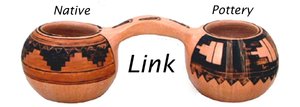
Mata Ortiz Pottery
PH86_Mata-Ortiz_pottery-olla_Gerardo Tena. 8 1/2" x 6 1/2"
$480.00
This generous olla was built, fired and decorated by the artist, Gerardo Tena Sandoval, who has signed it with his first name, Gerardo. It is 8.5” high and 6.5” wide.
The decoration is geometric imagery that inspired Gerardo Tena after learning to make pots from his mother, Sofia Sandoval de Tena. The excellence of the final product is enhanced by the sanding and polishing provided by his wife, Nora Hernandez de Tena. Pottery in Mata Ortiz is a family affair.
Because we are downsizing, our involvement in native art and our lifestyle, we are eager to see this and other Mata Ortiz pottery we own passed on to others who will appreciate its beauty.
As a result, we have eliminated an extra line-item charge for shipping in the 48 mainland United States. If that is your order’s destination, Native-Potterylink will pick-up the shipping cost. Your shipping will be FREE.




